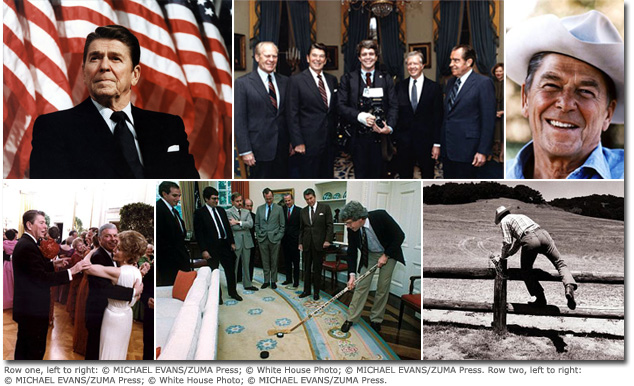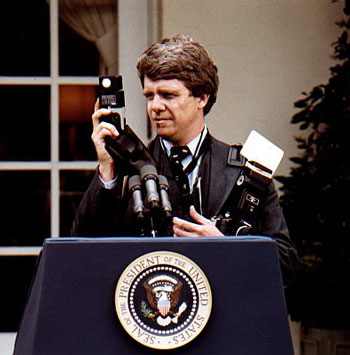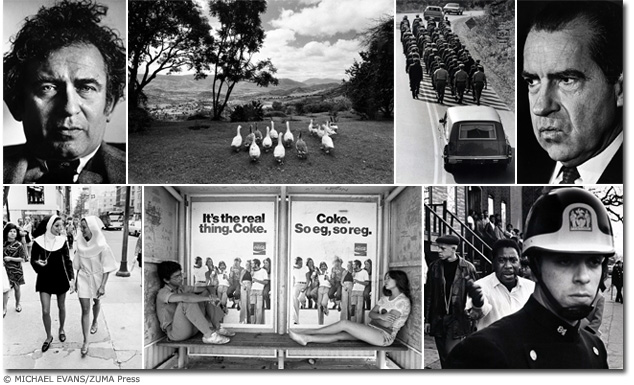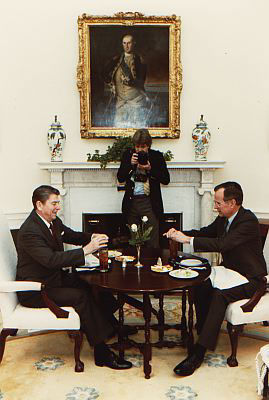 |
→ January 2006 Contents → Column
|
Tribute to Michael A. W. Evans
January 2006
|
|||||||||||
|
ATLANTA, GA. (Dec. 1, 2005) - Michael A. W. Evans, a noted newspaper, magazine, president's photographer, early developer of software systems for cataloging photography collections and picture agency ZUMA Press' first CTO and father of their original database, died peacefully Dec. 1, 2005, while surrounded by his family at his home in Atlanta. Mr. Evans (61) succumbed after a four-year fight against cancer. Story Evans, his wife, this morning wrote, "The presence of God and the community of our friends sustained him to the very end. For that we will be eternally grateful."
Evans' photojournalism career began in Ontario at the Port Hope Evening Guide in 1959, when he was 15. "They paid me two dollars for a photograph and ten cents an inch for the stories I wrote on the [school] football games," Evans said. "I wrote very long stories." Evans says he has two distinct memories from his younger years of study at Queen's University that influenced his career choice. The first is Heisenberg's Uncertainty Principle, which states the very act of observing a phenomenon changes the nature of the phenomenon, and the second was a televised fund-raising speech Ronald Reagan gave for Barry Goldwater. The first recollection led Evans into the world of photojournalism, and the second ended up being the main subject of his photography, Ronald Reagan.
After a brief stint with Cleveland's Plain Dealer in 1968, he was hired to the staff of The New York Times by legendary picture editor John Morris. He was Morris' first hire after becoming picture editor at the Times. From the outset, Evans displayed a unique eye and passion for his work that was widely recognized by his peers. Only two years after starting at the Times, he was nominated for the Pulitzer Prize in Feature Photography.
After leaving The New York Times, he started to freelance for TIME magazine, among others. On assignment for TIME under famed picture editor Arnold Drapkin's direction, he covered every aspect of the Reagan presidential campaign, from pre-convention July 1980 until Christmas, 1980. Then newly nominated President Reagan offered Evans a position as personal photographer. He would be independent of the White House press office and given unparalleled access to the president. Although he had more lucrative opportunities, he accepted the offer and spent the next four years making a pictorial record of the administration and its chief executive.
Lois Romano, a staff writer at The Washington Post, aptly described Evans' position in 1985 as "a job that requires him to be both ubiquitous and invisible." Evans also led a small team of photographers and picture editors, oversaw a photo lab in the White House basement and occasionally interceded with administration officials on behalf of his colleagues in the media. Of Evans' work, President Reagan once said, "Through Michael's lenses are captured the special moments of history which will exist long after I leave office. He records for future generations the good and the bad--the victory and the defeat...Michael always does this with grace and skill. Being one of his subjects is always a pleasure." Longtime friend Donald Winslow recently wrote an article on Evans for NPPA's News Photographer magazine. "Mike Evans was a skilled photographer, but his genius was storytelling," Winslow said at Evans' passing. "Mike took the potential for telling stories with pictures to a new level. You can see his eye and his intellect in picture after picture and his integrity in the choices he made. You see him thinking, 'What is important here, and how will my picture tell the truth about it?'"
In Washington, Evans met his future spouse, Story Shem, a former Carter administration aide and founding partner of Arrive, a Washington communications firm with an all-woman staff. Evans promptly enlisted Shem to help organize his ambitious portrait project and coax a number of notable holdouts to schedule photo sessions. The couple married and moved to Atlanta, where Evans briefly served as photography editor for the Atlanta Journal-Constitution. Though Evans stopped taking pictures, he was soon to be considered one of the foremost authorities in the digital image processing and distribution fields. Over the years, media giants including TIME magazine, the Miami Herald and Keystone Canada, as well as the J. Paul Getty Museum in Malibu, California, used his photo database systems. Another was ZUMA Press, the independent picture agency and wire service for which Evans served as chief technology officer. (ZUMA is also the sole representative of Evans' photo collection.) Fighting cancer till the end, he worked for ZUMA as a big-picture man, always looking for great solutions to the big and small tech problems of running technology for a cutting-edge picture agency/wire service in today's cutthroat, demanding marketplace.
Evans was always up for every challenge and relished the opportunity. Michael is survived by his loving wife Story. Michael and Story Evans have two daughters: Abigail, 20, and Madeleine, 16. In addition, Michael has four adult children: Ewen Riddell, Drew Evans, Megan Evans and Amanda Evans. He also is survived by two sisters, Judy Evans and Esme Comfort and one brother, Tony Evans. Michael has four grandchildren. Evans supported Alzheimer's research, homelessness awareness and other efforts to improve the length and quality of life, but he was uncomfortable calling attention to his charitable activities.
Longtime friend and fellow photojournalist Arthur Grace said after hearing the news, "Michael Evans had it all as a photojournalist--intelligence, wit, curiosity, tenacity, an abundance of class and prodigious talent with a camera. He was a consummate professional and a true gentleman. He will be sorely missed by all those who had the pleasure of working with him or competing against him. Fortunately, his iconic photographs will keep his reputation growing and his memory alive."
A memorial service for Michael was held on Tuesday, December 6, at St. Anne's Episcopal Church, in Atlanta, Georgia. Donations may be made to the Michael Evans Memorial Library Fund at St. Anne's Episcopal Church, Atlanta, to the Arts and Photography programs at Davidson College, Woodward Academy or to Hospice Atlanta.
© Scott McKiernan
|
|||||||||||
Back to January 2006 Contents
|
|





